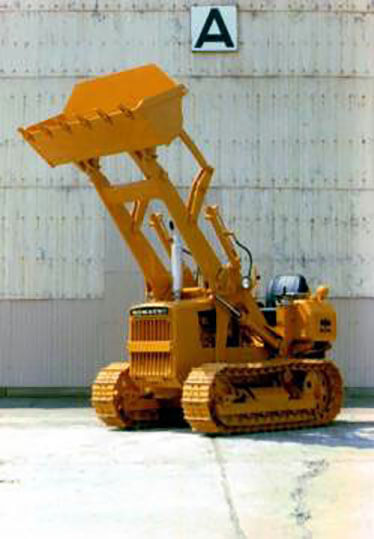1970
Since this era, the focus of domestic demand gradually started shifting from bulldozers to hydraulic shovels. Additional considerations, such as ease of operation, also became an important aspect of design.

To improve operation and handling over the direct transmission type, Komatsu removed a tor-con from a torque flow vehicle and increased the clutch capacity of the torque flow transmission. It was called "hydro shift transmission", and D21S was the first model to have it.
To solve the problem of lack of highly skilled operators, simplification of operation with high efficiency was implemented.
Weight: 3900kg
Bulldozer
Since its first emergence in 1951, it took only 50 years for the hydraulic shovel to establish its primary position on construction sites worldwide. Its size ranges from mini to super size depending on the scale of construction, and during the half century, it kept evolving by achieving a minimum rear-swing radius and adapting styles that would work with characteristics of each site. Mirroring the movement of a human hand, a hydraulic shovel will continue to evolve during the 21st century.